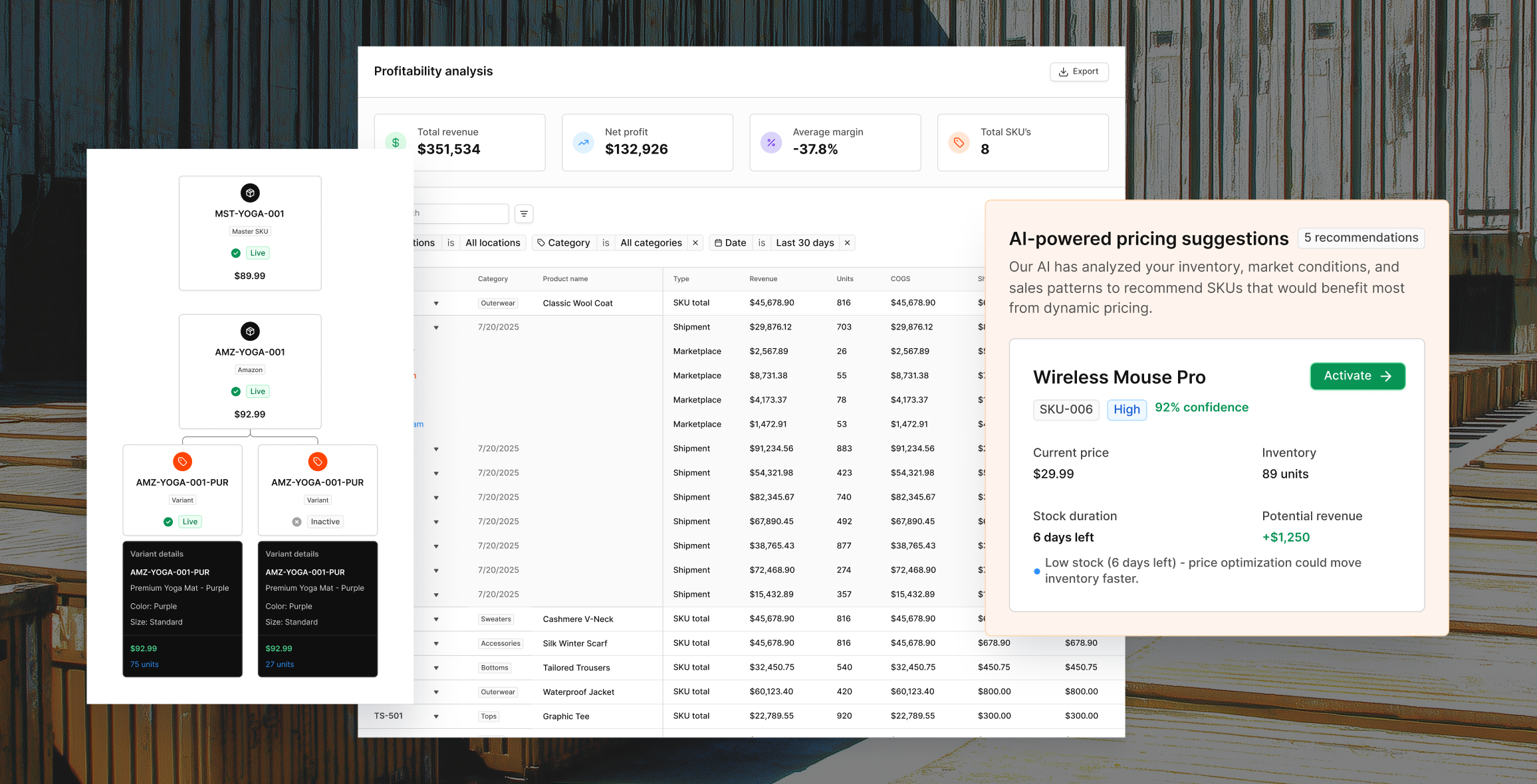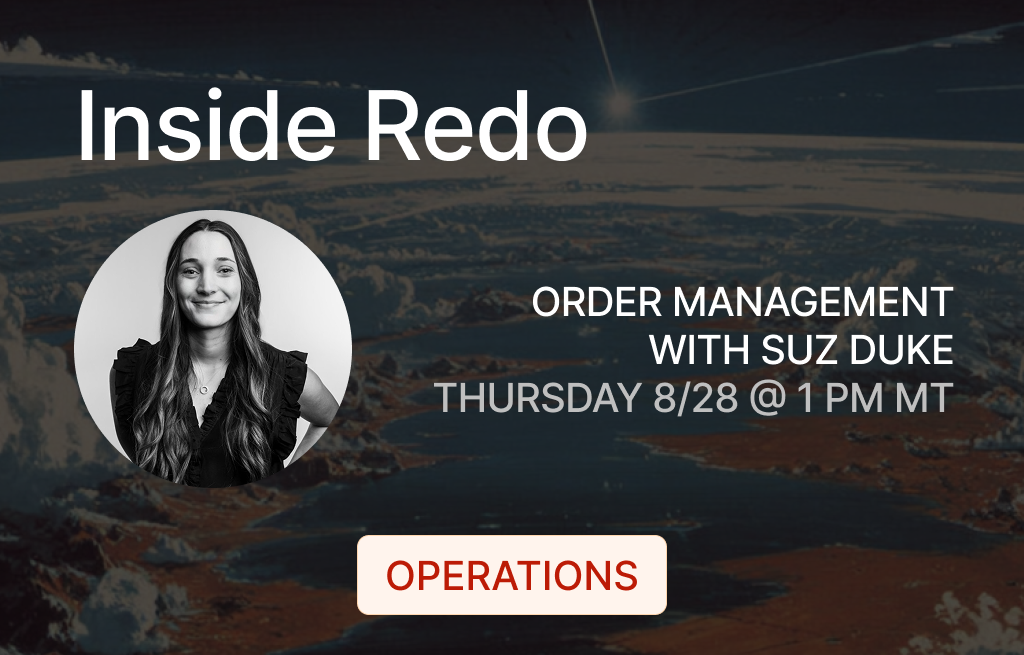Shipping Manifest: What It Is & Why It Matters for Modern Ecommerce



Request A Demo
Take 30 minutes to see how Redo can help you retain more revenue through a more cohesive post-purchase experience for your buyers.
When your brand starts shipping globally, the paperwork isn’t optional.
A shipping manifest is more than a list — it’s the operational map behind every container, freight movement, or cross-border shipment. In 2025, manifest accuracy can mean the difference between a smooth delivery and costly customs delays or customer frustration.
For modern DTC and Shopify brands, every return is a logistics event — not just a refund. That means international returns may require their own documentation and reconciliation across freight systems. When your manifest data and returns workflows aren’t aligned, inefficiencies and costs can quietly multiply.
What Is a Shipping Manifest?
A shipping manifest is a formal document that lists all goods being shipped within a container, truckload, or other transport unit. It typically includes:
- Product identifiers (SKU, description, quantity)
- Total weight and package count
- Point of origin and final destination
- Handling requirements (e.g., fragile, temperature-controlled)
- Carrier and voyage details (if applicable)
Carriers, ports, and customs officials use the manifest to confirm what’s being transported and verify it against other shipping documents such as the Bill of Lading, commercial invoice, and packing list.
While the format can vary depending on the mode of transport — air, ocean, or ground — the goal is always the same: ensure the contents of a shipment are transparent and traceable.
A clean, accurate manifest helps:
- Speed up customs clearance by reducing the risk of inspection or delays
- Prevent routing or loading errors, especially in multi-stop logistics
- Reconcile inventory and freight data between warehouse and carrier
- Provide a legal record if cargo is lost, damaged, or disputed
For high-volume ecommerce brands, manifests serve as the connective tissue between what your warehouse shipped and what the carrier actually moved.
Key Types of Shipping Manifests
Depending on your logistics partners and transport mode, you may encounter several types of manifests. Each serves a distinct purpose in ensuring accuracy, compliance, and visibility across the supply chain.
- Cargo or Freight Manifest — A comprehensive record listing every shipment on a specific vessel, truck, or aircraft. It includes consignee details, item counts, and weights, helping carriers and customs authorities reconcile what’s loaded versus what’s declared. A precise cargo manifest minimizes errors, delays, and costly inspection holds at ports.
- Import General Manifest (IGM) — Filed electronically with customs before a vessel or aircraft arrives, the IGM gives authorities an early look at all goods being imported. It includes carrier, voyage, and container details, enabling faster risk assessment and clearance. For ecommerce importers, timely IGM submission helps avoid demurrage or late filing penalties.
- Container Manifest — Focused on the contents of a single shipping container, this manifest outlines each item’s SKU, quantity, and destination. It’s essential for intermodal moves where containers transfer between ship, rail, and truck. Customs and 3PLs rely on container manifests for transparency, efficient inspection, and accurate handoffs across carriers.
- Dangerous Goods Manifest — Required for hazardous materials such as chemicals, batteries, or flammable products. This document follows strict international safety standards outlined by organizations such as the International Maritime Organization (IMO) and the U.S. Department of Transportation’s Pipeline and Hazardous Materials Safety Administration (PHMSA).
For a full breakdown of maritime hazardous material requirements, see the official PHMSA “Maritime Transportation of Hazardous Materials” guide (PDF).
- Out-of-Gauge (OOG) Manifest — Used for oversized or irregular cargo that can’t fit in standard containers. It specifies the shipment’s exact dimensions, handling needs, and securing methods to ensure safe transport. OOG manifests help carriers plan loading and routing while meeting compliance requirements for special freight.
- Reefer Manifest — Created for temperature-controlled shipments like cosmetics, pharmaceuticals, or perishables. It records standard cargo details plus cooling instructions and temperature set points to maintain product integrity. Reefer manifests allow carriers to track conditions end-to-end and verify compliance with cold chain regulations.
Each type has unique compliance requirements, and the wrong or incomplete manifest can result in detention, demurrage, or fines.
For ecommerce operations, most shipments won’t require complex manifests — but when you expand into wholesale, cross-border, or 3PL-managed logistics, they become critical.
Shipping Manifest vs. Bill of Lading
Although the terms are often used together, a shipping manifest and a Bill of Lading (B/L) serve different purposes.
If the details in a Bill of Lading don’t match the manifest — for example, a mismatched quantity or HS code — customs may hold the shipment for review. This slows down delivery, increases costs, and impacts your customer experience.
In short: the manifest ensures visibility, while the Bill of Lading ensures accountability.
Why Shipping Manifests Matter in Modern Ecommerce
Most DTC brands don’t think about manifests until they scale — but once you’re moving thousands of orders through 3PLs, carriers, and global returns channels, manifests become a core part of your operational accuracy.
Here’s how they come into play:
- Cross-border fulfillment
When shipping to or from countries like Canada, the UK, or Australia, manifests and customs declarations must align with the data on your invoices and product listings. Discrepancies — even minor SKU naming errors — can lead to clearance issues. - Freight consolidation
If your 3PL consolidates outbound or return shipments into larger freight movements, they’ll create a manifest summarizing all packages in a container or pallet. This document ensures that every unit is accounted for at handoff and receipt. - Reverse logistic
Manifests become relevant again when returns are consolidated through regional hubs or carrier networks. These aggregated “return summaries” help logistics partners track what’s received, what’s missing, and what’s restockable. - Sustainability and auditing
Brands aiming for sustainability reporting often use manifest data to track transportation volume, packaging weights, and carbon metrics — making this document valuable beyond customs and freight tracking.
Manifests and Reverse Logistics: The Returns Connection
Most ecommerce returns are single-parcel shipments that don’t require a formal manifest. However, once returns are consolidated — especially in international or 3PL-managed operations — manifests re-enter the equation as a way to summarize and reconcile bulk returns.
These consolidated manifests make it easier to confirm what’s been received, identify discrepancies, and streamline restocking at distribution centers.
Even when a physical manifest isn’t required, the principle remains the same: maintaining clarity between what left the customer’s hands and what arrives back at the warehouse.
That level of visibility is what separates efficient return operations from reactive ones.
How Manifests Fit Into Ecommerce Tech Stacks
The days of manual paperwork are fading. Today’s leading logistics workflows combine manifests with automation, APIs, and integrated fulfillment systems.
Here’s how that typically works:
- 3PL Integration: Most third-party logistics providers generate manifests automatically from order data and push them into carrier networks for customs filing.
- Carrier APIs: Platforms like UPS, DHL, and FedEx now accept electronic manifests (EDI or XML) that synchronize in real time with your warehouse or Shopify data.
- Shopify & ERP Systems: Ecommerce brands can map SKU, weight, and HS code data from Shopify or ERP systems into manifest templates to ensure compliance with international documentation rules.
- Analytics Layer: With structured manifest data, brands can analyze freight volume by region, carrier efficiency, and shipping cost per order — unlocking operational insights beyond what a simple order export can show.
Automating manifest creation and reconciliation ensures consistency across thousands of shipments — saving time, reducing customs issues, and giving finance teams more reliable landed-cost data.
Building a Smarter Logistics Flow
When your brand ships products across carriers, borders, or fulfillment partners, accuracy in documentation isn’t optional — it’s what keeps freight moving smoothly. A precise shipping manifest ensures compliance, traceability, and accountability at every step of the outbound journey.
But once a customer decides to make a return, that same level of clarity becomes just as important. Returns mirror outbound logistics in complexity — yet they’re often where visibility and efficiency break down.
This is where Redo helps brands stay connected from start to finish.
Redo provides reverse logistics visibility, leveraging carrier relationships and negotiated shipping rates to ensure every return label is created, tracked, and reconciled with precision. Whether a package is moving domestically or across borders, Redo gives your team real-time insight into the status of each return — helping manage timelines, costs, and customer expectations with confidence.
Beyond tracking, Redo unlocks powerful operational insights. By capturing SKU-level details, return reasons, and campaign context, the platform allows brands to connect logistics patterns to customer behavior. Teams can identify high-return products, detect fulfillment bottlenecks, and optimize post-purchase performance across every channel.
With Redo, ecommerce brands bring the same structure and accuracy found in shipping manifests to their entire post-purchase ecosystem — creating a faster, more transparent, and more profitable logistics flow.
Key Insight
A shipping manifest isn’t just a compliance document — it’s the backbone of global logistics transparency.
For fast-scaling ecommerce brands, it ensures visibility, accuracy, and traceability across every shipment and return. When your manifests, carrier data, and returns platform work together, you gain the clarity to cut costs, prevent delays, and deliver a better customer experience from checkout to return.
About Redo
Redo helps ecommerce brands turn post-purchase moments into lasting relationships.
Use AI-powered return flows, exchange-first logic, instant credit, and analytics to understand not just what customers bought, but why they come back.








